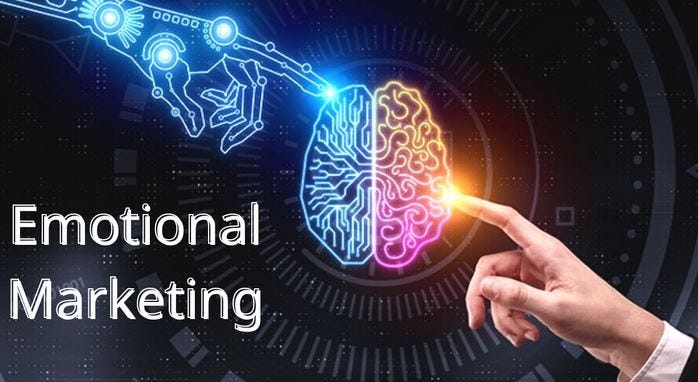Emotional marketing is a strategy that uses human emotions—such as happiness, fear, love, or belonging—to create a strong bond between the brand and its audience. It goes beyond logic and price points, appealing to how people feel, not just what they think.
In a world full of ads, it’s emotions that make your brand memorable.
Why Emotional Marketing Works
Humans are emotional beings. Studies show that emotions influence 90% of our buying decisions. Whether it’s a tear-jerking ad or a heartwarming customer story, emotional marketing taps into real, relatable feelings to:
- Increase brand recall
- Build trust and loyalty
- Drive engagement and shares
- Influence purchase decisions
Famous Examples of Emotional Marketing
- Google India – “Reunion”
A beautiful story about two friends separated by partition, reunited through a Google search. - Coca-Cola – “Share a Coke”
Personalized bottles triggered joy, nostalgia, and a sense of connection. - Nike – “Dream Crazy”
Inspired determination and courage by featuring real athlete struggles.
Types of Emotional Triggers Used in Marketing
| Emotion | Brand Strategy Example |
|---|---|
| Joy | Celebration ads, giveaways, fun visuals |
| Trust | Testimonials, behind-the-scenes, certifications |
| Fear | FOMO, limited-time offers, safety campaigns |
| Belonging | Community hashtags, user-generated content |
| Nostalgia | Vintage visuals, throwback themes |
How to Use Emotional Marketing in Your Strategy?
1. Know Your Audience’s Core Emotion
Understand what moves your audience—security, pride, happiness?
2. Tell Authentic Stories
Real stories create real emotions. Use brand narratives that feel personal.
3. Use Visual & Audio Cues
Music, colors, and faces can stir emotions instantly.
4. Personalize the Experience
Make your audience feel seen. Tailor messages using names, local references, or behavior data.
5. Measure Emotional Response
Track metrics like shares, comments, sentiment analysis, and time spent.
Final Thoughts
Emotional marketing is not manipulation — it’s meaningful connection. If your brand can make someone feel something, they’re more likely to buy, return, and tell their friends. Whether it’s trust, joy, or nostalgia, emotions are the bridge between attention and action.
Want to build an emotional connection with your audience?
Let our marketing team craft stories your customers feel.
FAQ Section: Emotional Marketing
1. What is emotional marketing?
It’s a strategy that uses emotional triggers like happiness, fear, or trust to connect with audiences and influence their decisions.
2. Why is emotional marketing effective?
Because people buy based on how they feel, not just logic. Emotions improve recall, loyalty, and engagement.
3. Which emotions are commonly used in marketing?
Joy, fear, trust, surprise, belonging, sadness, and nostalgia are most common.
4. Is emotional marketing only for big brands?
Not at all. Small businesses can use emotional storytelling, testimonials, and relatable content to connect deeply with their audience.
5. Can emotional marketing improve conversions?
Yes. Emotional content often increases time on page, social shares, and conversion rates by making the brand more relatable.
6. How do I measure emotional marketing success?
Track engagement, sentiment (via tools), time spent, and sharing behavior. Surveys also help gauge emotional response.
7. What industries benefit most from emotional marketing?
All industries—especially fashion, food, tech, healthcare, and nonprofits—can benefit from emotional storytelling.
8. What role does color play in emotional marketing?
Colors have strong psychological associations. Red evokes passion or urgency, blue evokes trust, yellow brings joy, etc.
9. Should I use humor in emotional marketing?
Yes—if it aligns with your brand. Humor is a strong emotional tool that builds likability and engagement.
10. Can emotional marketing backfire?
If it’s inauthentic or overly dramatic, it can feel manipulative. Always stay true to your brand voice.



